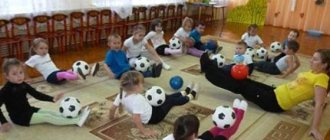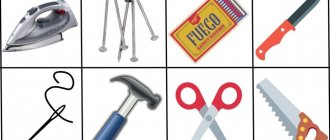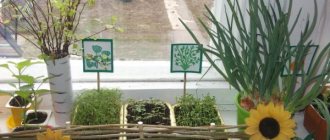Calendar and thematic planning “Healthy” in the second junior group
Ksenia Rybalko
Calendar and thematic planning “Healthy” in the second junior group
2 Junior group Topic : “ Get healthy ”
.Program content: 1. Formation of initial ideas about
health and a healthy lifestyle .
2. Creation of game, problem situations that contribute to the formation of basic skills in caring for your face and body. 3. Creating conditions for the development of ideas about one’s external appearance, gender ideas. 4. Development of skills to distinguish and name sensory organs (eyes, mouth, nose, ears, development of knowledge about their role in the body and how to protect and care for them. Day of the week Mode Integration of educational areas Joint activities of adults and children, taking into account the integration of educational areas Organization of a developmental environment for independent activities of children (activity centers, all group )
Interaction with parents/social partners
Monday
Morning social and communicative development;
cognitive development;
speech development;
artistic and aesthetic development; physical development. Morning exercises.
Game-conversation “Journey to the Land of Health ”
Memorizing the poem by V. Berestov “The poor doll is sick”
S/r and “Doll Katya caught a cold”
Goal: development of KGN.
teach to apply the acquired knowledge in a game situation. Take care of your health ; development of speech activity, the ability to use a handkerchief, development of skills in choosing outerwear for a walk and sequential actions when dressing; nurturing sympathy and desire to help the doll Didactic games “Collect a picture”
,
“Find a pair”
,
“The fourth wheel”
“Who eats what.”
Goal: to consolidate children’s knowledge about domestic animals
(what they eat)
to develop thinking, attention, memory
encourage children's participation
in joint games, create game situations that contribute to the formation of an attentive, caring attitude towards others.
To consolidate washing skills, to facilitate the implementation of the skill by consciously and with pleasure following the rules of washing. Examination of illustrations, photographs about health , pictures for viewing the plot of the works of E. Moshkovskaya “Ears”
, K. Chukovsky
“Moydo-holes”
, A. Barto
“Chumzaya Girl”
; personal hygiene items for a didactic doll (comb, towel, handkerchief, etc.; Talk with parents about the well-being of children.
Individual conversations and consultations at the request of parents.
Direct educational activities
Physical development: According to physical plan . instructor
Formation of a holistic picture of the world (the world around us)
Excursion to the nurse's office. Purpose: to continue acquaintance with the profession of a nurse and a doctor, to give an idea of the similarities and differences in their work, to develop a respectful attitude towards the work of a medical worker
Walk: social and communicative development;
cognitive development;
speech development; physical development Observation of ice Objectives: - to introduce the natural phenomenon - ice; to form an idea about the state of water in the environment.
Running Games: Airplanes
;jumping games:
“Hares and the Wolf”
;
games with throwing and catching - “Throw - catch-may”
, for orientation
“Who left?”
Work activity: Pouring an ice path together with the teacher. Goals: - teach to carefully water from a watering can; cultivate a desire to help adults in their work Teach children dress correctly and quickly for a walk, carefully put things in their locker before and after a walk.
Outdoor game: “Sunshine and Rain”
.
Goal: to develop the ability to follow the basic rules of the game. encourage children's participation
in joint games, create game situations that contribute to the formation of an attentive, caring attitude
to others.
Take-out materials: Brooms, shovels, dolls, dressed according to the season. Sandbags, balls, hoops, small toys, molds, signets, pencils, sticks, buckets, scoops. he
Work before bedtime social and communicative development; Continue to teach children to dress and undress in a certain order; fold removed clothes in a certain order. Foster independence and accuracy. Reading: V. Fedyaevskaya “Helpers”
Evening: social and communicative development;
cognitive development;
speech development;
artistic and aesthetic development; physical development. Health-improving gymnastics after sleep, walking along massage paths to music
"Vitamin Family"
(about berries and fruits0
Physical exercise: They circled around themselves and turned into ladybugs.
Ladybugs show your heads, noses, mouths, wings - Arms, legs, tummies.
Ladybugs turn their heads to the right,
Ladybugs turn their heads to the left,
Stomp your feet, flap your wings
They turned to each other and smiled sweetly. “TANYA COLD A COLD”
Goal: to promote the formation of the habit of using a handkerchief, to consolidate the knowledge that when sneezing and coughing you need to cover your mouth with a handkerchief, and if someone is nearby, turn away Material: handkerchief RULES OF HYGIENE Goal: to consolidate cultural and hygienic skills (washing, dressing, brushing teeth, combing your hair, bathing, developing the ability to show these movements with the help of facial expressions and gestures and guessing sets for story games by showing them
“ Let’s dress the doll for a walk”
,
“How to set the table”
;
Passive assistance to the teacher
“We are putting things in order in the sports corner”
Exhibition of massage paths
(their importance and significance in the development of a child)
.
Consultation for parents on the topic: “Education of cultural and hygienic skills in children 3-4 years old.
Walk. Observing frosty patterns Goal: observe frosty patterns on the window. Removable material Wooden spatulas.
Tuesday : Morning social and communicative development;
cognitive development;
speech development;
artistic and aesthetic development; physical development. Morning exercises (card file)
Game situation: “Letter from a dirty guy”
Did. /game: Wonderful bag (toilet items)
Saying a simple saying: “Dear Mila washed herself with soap. I lathered myself, washed it off, that’s how Mila washed herself.”
DYNAMIC PAUSE: Clear water is flowing,
We know how to wash ourselves. We take tooth powder,
Brush your teeth firmly. Wash your ears, wash your neck,
we see good things. Massage of the magic points of the ears “Let’s play with the ears” (card index)
"Playing with a Doll"
.Goal: education of CGN through story-based play with a doll, development of the ability to distinguish body parts, find and name care items. Develop the ability to speak out without interrupting each other, to speak calmly. Encourage children to try to talk about what is depicted in the picture, answer the teacher’s questions, and promote the formation of phrasal speech.
Creating conditions for engaging in creative activities
Illustrations,
D/i "Valeology"
or
healthy baby.
Game "Colored cubes"
Goal: to teach how to compare colors according to the principle “this way - not that way”
, select pairs of objects of the same color.
Conversation “Clothing of children in
a group ” .
Carrying out hardening procedures and morning exercises with children at home, regular walks in the fresh air in order to improve the habit of health-saving behavior
Direct educational activities
Hood. -esthete. development (music)
According to
the plan of the muses .
head of Arts. aesthetic development: (drawing) “Oranges and tangerines for a sick doll”
techniques for learning to draw and paint round shapes of large and small sizes using a brush, developing the ability to select colors, developing the ability to hold a brush correctly, achieving free movement of the hand while drawing; exercises to develop skills in drawing simple plot compositions;
(thematic
planning . development) Walk: social and communicative development;
cognitive development;
speech development; physical development Observations of a janitor’s work, conversation “Why is ice dangerous?”
to form habits
of health-saving behavior
Labor activity
Shoveling snow, clearing paths.
Lots of snow, no place to run. There is also snow on the path. Here are the shovels for you guys, let's work for everyone.
Goal: to teach how to use shovels, shoveling snow into a certain place.
Outdoor game “Come to me”
.Goals: to carry out the teacher’s task; to walk straight, maintaining the given direction of children’s self-control; control and evaluation of their activities; sequence of undressing.
Conversation “Fight or negotiate”
: develop children's communication skills in various life situations.
Formation of ideas about safe behavior in everyday life (do not touch or put unfamiliar plants in your mouth)
Remote material
Shovels, pencils, masks for games, molds for playing with snow, a doll dressed for the weather, children's toy sleds.
Work before bedtime social and communicative development; for singing: “Ladushki”
(Russian folk melody)
. Goal: to cultivate friendly relations with each other.
(N.D. -Yu.U.)
Evening: social and communicative development;
cognitive development;
speech development;
artistic and aesthetic development; physical development. Health-improving gymnastics after sleep, walking along massage paths. (card index
"Know Your Body"
"My Five Helpers
"
Teach children to understand the meaning of individual parts of their body: eyes, ears, nose, mouth; distinguish children by clothing, hairstyle and other features; develop visual and auditory attention, sense of smell and taste.
S. r. game “Family”
(bathing babies)
Reading by Aleksandrov
“Bathing”
, Nursery rhymes:
“Water, water” (N. D. - Yu. U.) “Dyenesh blocks”
,
“Puzzles”
,
“Find a pair” "
,
"Find out what's missing"
Encourage children to play independently with gurneys, cars, carts, balls, balls. to create the need to share one’s impressions with teachers and parents, to encourage the desire to ask questions to the teacher and peers, to develop a dialogical form of speech.
it is advisable to enter:
— equipment for deploying the role-playing game “At the Doctor’s”
,
“Hospital”
(screen, couch,; read with your child at home: M. Gaziev
“In the Morning”
, R. Sef
“Soap”
, learn to correctly name the process of caring for your body, the items necessary for its implementation;
Walk. Situational conversation “Do you need to know how to dress yourself?”
.Reinforce the sequence of dressing and undressing. Organizing outdoor games:
“Recognize by voice”
,
“We are funny guys”
; Cognitive and research: Observations in nature with the onset of autumn. Observing the trees: leaves of different colors.
Wednesday: Morning social and communicative development;
cognitive development;
speech development;
artistic and aesthetic development; physical development.
Morning exercises
Eye exercise complex: “Look with your eyes to the left...” (music library with Masyanya)
Conversation “I love vitamins - I want to be healthy !”
Goal: teach the child to take care of his health .
Didactic game “Wonderful bag” (models of vegetables and fruits)
Role-playing game “At the doctor’s appointment”
to clarify the purpose of pieces of gaming equipment and methods of operating with them;
to foster awareness of the need to report your well-being to adults, the need for treatment; Finger gymnastics: “Fist”
Like beans in a pod,
Our fingers are in a fist.
We straighten our fists
And scatter the beans
One, two, three, four, five Putting it all back together again.
Game exercises “Who will say hello ? In the process of playing with toys, develop children's interest in the world around them and introduce them to their native culture.
GAME “SOAP GLOVES” Purpose: to teach a child to soap his hands from the outside and inside. Equipment: baby soap, towel Review of the album: “Types of sports”
examination of a person’s illustrations
(formation of gender identity)
;
Memo for parents
. ”
Selection of finger and breathing hymn sticks; outdoor, didactic and speech games; articulation exercises.
Direct educational activities
Physical development: According to physical plan . instructor
Cognitive development (FEMP)
“Mathematical journey”
Objectives: consolidate knowledge about geometric figures, answer the question “how many?”
” in words one, many, none. Continue to develop the ability to form a group of individual objects and isolate one object from it.
Walk: social and communicative development;
cognitive development;
speech development; physical development Observation of trees. Purpose: To form ideas about the seasons.
Reading a nursery rhyme and performing the corresponding movements (N.D.-Yu.U.)
“The legs started walking - tramp, tramp, tramp!
Right along the path - top, top, top!
Come on, more fun - top, top, top!
That's how we do it - top, top, top!
Boots stomp - stomp, stomp, stomp!
These are our legs. Goal: To develop the ability to monitor the development of action; create conditions for memorizing nursery rhymes. Outdoor games: “On a level path”
,
“Mice in the Pantry”
Goal: Create a cheerful, joyful mood. Goal: Develop in children various types of movements; learn to perform movements according to the model.
Game to harmonize relationships “Call me affectionately”
to strengthen psychological comfort in
the group. Independent activity during a walk.
Games with external materials. Steering wheels, blades, molds, toys, cars
Work before bed Dramatization game: “Masha is having lunch”
.
Goal: Strengthen the ability to eat carefully, improve food culture skills.
Evening: social and communicative development;
cognitive development; speech development; artistic and aesthetic development; physical development. Health-improving gymnastics after sleep, walking along massage paths. Awakening gymnastics: “I’m lying in the sun” (card index)
Reading a fairy tale by K. Chukovsky: “Moidodyr”
Goal: To introduce children to verbal art; create interest and need for reading.
Experience: “How do you feel?”
(offer to put a warm and cold object on your hand)
Modeling: “The ball is our main athlete”
Didactic game “If I share, I won’t share”
to consolidate knowledge about personal hygiene items. Cultivate friendly relationships between children, the habit of playing together, and engaging in independently chosen activities.
After the game, get used to dismantling buildings, putting building materials back into place, carefully folding them. Examination of family photo collages: “Into nature for health ”
Game "Dancing Shadows"
Goal: to develop visual sensation, to form ideas about light and darkness. read K.I. Chukovsky’s poem “Moidodyr”
(watch the cartoon)
and talk about the importance of hygiene skills for
health ;
Walk. Outdoor game “Dashing and catching up”
Goal: coordinate your actions with the actions of your comrades.
Observing the weather, learning to notice that the days have become shorter and getting darker faster. S/r games of children's choice
Thursday-Thursday: Morning social and communicative development; cognitive development;
speech development; artistic and aesthetic development; physical development. Morning exercises
Role-playing game: “Visiting Doctor Aibolit”
Goal: To teach children to develop character plots; cultivate friendships; teach children to use substitute objects.
D/i “WHO NEEDS WHAT”
Goal: to enrich children’s knowledge about the items necessary for work as a doctor, cook, or salesperson.
Didactic game “Three circles”
Goal: to teach children to correlate three objects by size and indicate their relationship with the words: “big”
, small”,
“medium”
, largest”,
“smallest”
Watering plants Involving children in showing the method of watering Form an understanding that plants need light and water, they need to be looked after. Teach cooking together with the teacher equipment: bring watering cans, pour water into watering cans. Cultivate a desire to care for plants.
Performing CG procedures to the song: “We know how to wash cleanly”
Goal: Developing interest in music and performing cultural and hygienic procedures.
To form a stable desire to observe cultural and hygienic skills. Introduce story pictures depicting the child’s movements;
a notebook with a set of proverbs, sayings, riddles, poems about a person, about , etc. d. ;
templates for figures of children and adults; Talk with parents about the well-being of their children.
Individual conversations and consultations at the request of parents
Memo “How to teach a child the rules of behavior on the street”
.
Direct educational activities
Hood. -esthete. development (music)
According to
the plan of the muses .
Head of Hood. -aesthetic development: (applique)
“Let’s decorate Katya’s hat
.
Develop the ability to first lay out (in a certain sequence)
on a sheet of paper ready-made parts of different shapes, sizes, colors, creating an image (conceived by the child or given by the teacher, and stick them
Walk: social and communicative development; cognitive development;
speech development; physical development Observation of weather conditions
Goal: to learn to determine the time of year based on its characteristic features. Outdoor games “Sparrows and cars”
.Goal: to teach children to run quickly at a signal, but not bump into each other, to start moving and change it at a signal from the teacher, to find their place.
“Take care of the object.”
Purpose: to teach how to act and navigate according to a signal, in space, to develop dexterity.
P/i "Fun Train"
- cultivate a desire to play together, develop the ability to move after each other, holding tightly to the child in front, the ability to act on a signal Didactic game:
“I dress myself”
Purpose: To enrich children’s ideas about the processes of dressing in the autumn; develop the ability to dress and undress, take care of your things. Take-out materials: Sandbags, balls, hoops, small toys, molds, signets, pencils, sticks, buckets, scoops.
Work before bedtime social and communicative development; When undressing before going to bed, encourage him to take off his dress or shirt, then his shoes, tights, and hang his clothes on a chair.
Reading G. Zaitsev “Be friends with water”
.
Evening: social and communicative development; cognitive development; speech development; artistic and aesthetic development; physical development. Game rhythmic gymnastics “Barbariki”
- promote rapid awakening, strengthen
children’s health , develop motor activity, practice performing simple movements together with the teacher to rhythmic music.
Puppet show by R. Manerko “Piggy is not dirty”
for the purpose of teaching to maintain order and cleanliness in the room, developing a positive attitude towards work
Exhibition of children's works: “Healthy vegetables”
Goal: To consolidate the ability to draw round-shaped objects; develop aesthetic perception of color; cultivate neatness. Encourage children's desire to independently select toys and attributes for the game, use substitute objects. Independent games for children: Offer children skittles, ring throws, balls.
Goal: To teach how to independently develop motor activity, strength, and agility.
Decorating a parent’s corner: Memos to parents “Flu prevention”
,
“Flat feet and how to avoid it”
.
Walk. Children's games with external materials. Role-playing games of children's choice. P\game "Shaggy Dog"
-learn to move in accordance with the text, practice running.
“A clever couple”
Goal: to develop the eye, achieving good results. children's play activities based on their interests
Elementary work assignments - collecting toys in a basket after a walk.
Friday: Morning. social and communicative development;
cognitive development; speech development; artistic and aesthetic development; physical development. Morning exercises to the music: “We are stomping with our feet”
.
Conversation on the topic: “Eat more vitamins, you will always be healthy ”
.Goal: To reinforce in children the names of some vegetables, fruits, berries, and food products; expand children's understanding of how healthy foods are and how important it is to eat right.
Finger gymnastics “Morning”
The morning has come, the sun has risen.
Hey, brother Fedya, wake up the neighbors! Get up, big one! Get up, pointer! Get up, middle! Get up, little orphan! And little Mitroshka! Hello, la-doshka! Everyone woke up and stretched! Well done “We must, we must wash ourselves in the mornings and evenings...”
Continue to develop hygiene skills; wash your face, comb your hair; wipe your face only with your clean towel; cultivate a desire to be neat and tidy. Consolidate the names of various types of transport in speech.
Form the basics of safe behavior on the road, street “Make the figure of a girl (boy)
».
(Dyenesha blocks)
Didactic game “Let’s collect beads”
Goal: to develop the ability to group geometric shapes according to two properties (color and shape, size and color, shape and size, see the simplest patterns in the alternation of shapes. Talk with parents about the well-being of children.
Individual conversations and consultations at the request of parents
Direct educational activities Speech development
Conversation on the read poem by A. Barto “The Dirty Girl”
;
expansion and activation of children's vocabulary based on enriching ideas about health ;
articulation exercises to reinforce the correct, distinct pronunciation of sounds; — speech games and exercises to improve children’s ability to coordinate adjectives with nouns in gender, number, and case
(thematic planning development )
Hood. -esthete. development (modeling)
“Vitamins”
Goal: to continue to arouse children’s interest in modeling;
continue to learn how to roll lumps of clay (plasticine)
between your palms in a circular motion.
Walk:
social and communicative development;
cognitive development;
speech development; physical development Observation of a seasonal phenomenon - frost, frost Goal: to form an idea of frost as one of the states of water.
And not snow, and not ice, but with silver he will remove the trees.
The trees stand in frost - Sometimes white, sometimes blue.
There are pillars of bluish smoke above the huts.
And everything in the world is covered in frost - sometimes white, sometimes blue.
Remote materials: Shovels, molds for playing with snow, signets. Outdoor game “On a difficult path”
.Goal: to develop coordination of arms and legs when moving, a sense of balance, dexterity Individual work on the development of movements: based on the results of monitoring the development of the main types of movement
(teacher’s choice),
the formation of the skills to quickly and accurately dress, put on shoes correctly - with
a subgroup , individual (every day)
Independent
children's activities on
area, games with external materials - development of joint skills
play activity
Elementary work assignments - collecting toys in a basket after a walk.
Work before bed, social and communicative development; “People really need sleep.”
To develop children's interest in their
health ;
learn to take care of yourself; consolidate knowledge that sleep is necessary for a person, remember the rules of conduct before bedtime; develop the ability to make simple conclusions. GAME “LET’S PUT THE BEAR TO SLEEP” Purpose: to introduce the child to object-game actions with a bear, the functional purpose of the bed, to form imitative actions



